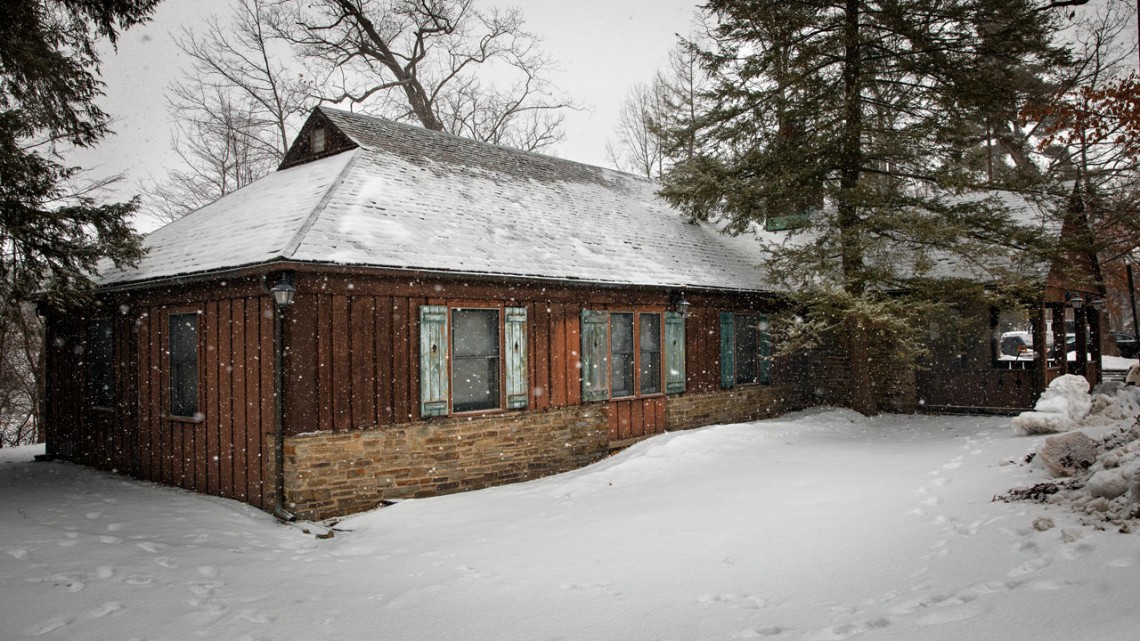
Toboggan Lodge, which researchers used as a case study for a new smart control system that includes a machine learning algorithm predicting the accuracy of weather forecasts.
To conserve energy, AI clears up cloudy forecasts
By Melanie Lefkowitz
If the forecast calls for rain, you’ll probably pack an umbrella. If it calls for cold, you may bring your mittens. That same kind of preparation happens in buildings, where sophisticated heating and cooling systems adjust themselves based on the predicted weather.
But when the forecast is imperfect – as it often is – buildings can end up wasting energy, just as we may find ourselves wet, cold or burdened with extra layers we don’t need.
A new approach developed by Fengqi You, the Roxanne E. and Michael J. Zak Professor in Energy Systems Engineering, predicts the accuracy of the weather forecast using a machine learning model trained with years’ worth of data on forecasts and actual weather conditions. You combined that predictor with a mathematical model that considers building characteristics including the size and shape of rooms, the construction materials, the location of sensors and the position of windows.
The result is a smart control system that can reduce energy usage by up to 10 percent, according to a case study his team conducted on Toboggan Lodge, a nearly 90-year-old building on Cornell’s campus.
“If the building itself could be ‘smart’ enough to know the weather conditions, or at least somehow understand a little bit more about the weather forecasting information, it could make better adjustments to automatically control its heating and cooling systems to save energy and make occupants more comfortable,” said You, whose paper, “A Data-Driven Robust Optimization Approach to Scenario-Based Stochastic Model Predictive Control,” published online in January 2019 in the Journal of Process Control.
“For instance, if I know the sun is going to come up very soon, it’s going to be warm, then I probably don’t need to heat the house so much. If I know a storm is coming tonight, then I try to heat up a little bit so I can maintain a comfortable level,” You said. “We try to make the energy system smart, so it can predict a little bit of the future and make the optimal decisions.”
The paper’s first author is Chao Shang, formerly a Cornell postdoctoral associate in You’s lab and now an assistant professor of automation at Tsinghua University. A team of master’s students in the Robert Frederick Smith School of Chemical and Biomolecular Engineering – including Haokai Huang, M.Eng. ’18, Wei-Han Chen, M.Eng ’18, Jun Yang, M.Eng. ’18 and Xiu Wang, M.Eng. ’18 – helped to develop the Toboggan Lodge case study, in addition to collecting years’ worth of historical weather and climate data to train the machine learning model.
With this information, the model can detect uncertainty not just in temperature but in precipitation, sunlight and differences in conditions by location. Based on the level of uncertainty in the forecast, the model adjusts itself accordingly.
“Even the best weather forecasting system is not going to give you the most accurate information,” You said. “Plus, the weather forecast information is usually for a certain region but not a specific location. For instance, the weather station at the Ithaca airport might not have the same weather condition as in Collegetown.”
Toboggan Lodge, on Forest Home Drive near Beebe Lake, provided an interesting case study because it is small, simple and old enough that its heating and cooling systems are relatively easy to retrofit.
Combining the machine learning algorithms and the mathematical programming methods creates a control system that’s more accurate and “smarter” than either of them would be on its own, You said. The framework has potential applications in building control systems and irrigation control in agriculture, and could be used for more efficient indoor environmental control in vertical farms and plant factories that are increasingly popular in large cities.
“We don’t have a perfect way to forecast the weather, so the best thing we can do is combine AI and mechanistic modeling together,” he said. “These two parts have never before been harmonized in a systematic way for automatic control and energy management.”
Media Contact
Get Cornell news delivered right to your inbox.
Subscribe
